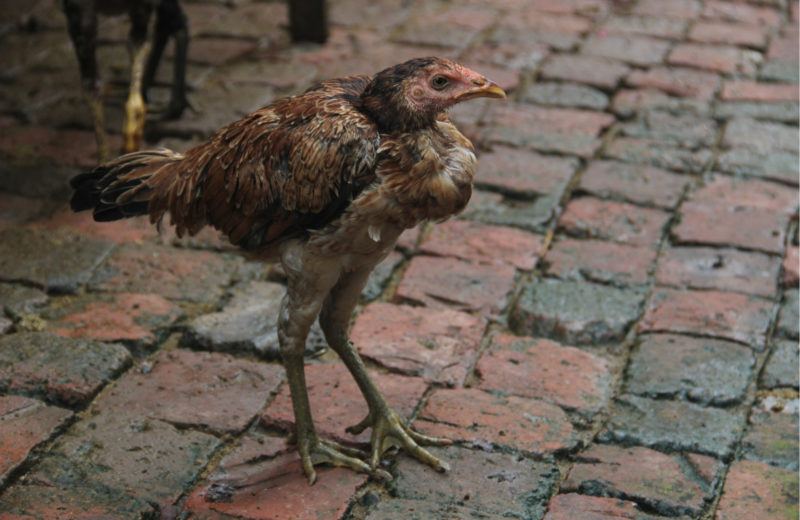A Retrospective on the Avian Flu Scare of 2005

On November 1, 2005, President George W. Bush held a press conference in which he called for draconian measures and $7.1 billion in spending to stop the spread of H5N1 Avian flu, which was then starting to cause some panic.
“The president said that the threat of a global outbreak should be taken seriously in light of the high number of fatalities that occurred during previous pandemics,” wrote the New York Times, “including the 1918 influenza pandemic, which killed 20 million people, including 500,000 in the United States.”
“If history is our guide, there is reason for concern,” said Bush.
Further, he called for the military to be ready to enforce travel restrictions, lockdowns, and closings for days and weeks at a time. The government produced a report, now missing from the White House website but viewable on Archive.org, that proposed what amounts to military rule and nationalization.
The plans were never deployed. At the time, not many people took the thing that seriously. There were tests and a vaccine available, though not widely used. In 2005, 98 people died globally, and another 115 the following year.
In the end, the most salient moment in U.S. history of that vaccine was the Bush press conference and the very frightening plans that were put in place but not yet deployed.
In my book Bourbon for Breakfast, I wrote a piece on the whole topic, which is probably more dismissive than it should have been but at least captures some of the crucial economic and political problems.
I reprint sections below:
In a classic case of News of the Weird, President Bush gave a press conference the other day to announce yet another central plan to deal with yet another disaster — this time an impending disaster, or so he claimed. It seems that some birds are catching a flu called Avian Influenza or, more commonly, the bird flu. It causes ruffled feathers and a drop in egg production. It can kill a chicken in two days flat. Scary.
The Chicken Littles at the White House got wind of this and decided to hatch a plan for dealing with the eventuality that it will wipe out whole cities inhabited by people. That’s people, not birds. He wants $7.1 billion from you and me, in emergency funding no less, to protect us from the wrath of this disease, which, he says, could sweep the country and kill 1.9 million people and hospitalize another 9.9 million. Part of the money will go for “pandemic preparedness,” and part will go to individual states so they can cobble together their own plans for our health and well-being.
As part of this plan, there is a website, pandemicflu.gov, which is also a helpful link if you haven’t so far believed a word you have read. Here you can click around and find the Mother of All Flu Reports: The National Strategy for Pandemic Influenza. Be assured that “the federal government will use all instruments of national power to address the pandemic threat.” That includes FEMA, the Department of Homeland Security, and a hundred other concrete palaces in DC.
In this report you will find what you must do: be “prepared to follow public health guidance that may include limitation of attendance at public gatherings and non-essential travel for several days or weeks.” The government, meanwhile, will establish “contingency systems to maintain delivery of essential goods and services during times of significant and sustained worker absenteeism.”
Yes, we are really supposed to believe that the government will “maintain delivery” of “essential goods and services.” Your job is to sit in your house and wait. Let’s just say that government has a credibility problem here.
Also, the Bush administration has a role for the military to do for the flu what it did for terrorism in Iraq: “Determine the spectrum of public health, medical and veterinary surge capacity activities that the U.S. military and other government entities may be able to support during a pandemic.” Remarkable what the military can do, from spreading democracy to liberating the oppressed to curing the sick — that is, when it is not making people sick or killing them for their own good.
Just to show that this isn’t merely a perfunctory line, Bush went out of his way to defend the role of the military in his press conference. “One option is the use of a military that’s able to plan and move,” he said. “So that’s why I put it on the table. I think it’s an important debate for Congress to have.”
Now, should this mass-death come about, our future would be rife with many uncertainties. But one thing we can know for sure: any attempt by government to manage the crisis will add calamity to disaster. It will be 9-11 plus New Orleans plus a few other amazing failures all rolled into one.
And the worst part of government failure will present itself: rather than make a mess of its own responsibilities, the government acts to prevent people from doing what they should be doing to deal with the crisis. “Stop in the name of the law” isn’t just a slogan from cop shows; it is the sum total of everything the government does.
The Bush administration, however — which is supposedly staffed by people learned in the wisdom of classical-conservative thought and informed by revelation from America’s traditional religious heritage — is just darn sure that the government is the best and only means to handle a crisis such as this.
A dazzling display of absurdity and chutzpah — that’s what the Bush press conference on the flu was. Even if the flu does come, and taxpayers have coughed up, the government will surely have a ball imposing travel restrictions, shutting down schools and businesses, quarantining cities, and banning public gatherings.
It’s a bureaucrat’s dream! Whether it will make us well again is another matter. And why should individuals on their own have no incentive to deal with disease? Why should the private sector have no reason to make cures available if they exist? Why are we to believe that the government would somehow do a better job at this level of crisis management than the private sector?
None of these questions have been asked much less answered.
So I’m reading along in The New York Times, and it casually says this: “This bird flu has infected about 120 people and killed 60. But the virus has yet to pass easily among humans, as is necessary to create a pandemic. Experts debate whether it ever will, but most believe that a pandemic flu is inevitable someday.”
Well, as Roderick Long often says about such contingencies, anything can happen. Men from Mars could land in capsules and plant red weed all over the world. The question we need to ask is how likely is it and who or what should address the problem should it arise.
The World Health Organization provides a link to data about human infection. It says the following: “Although avian influenza A viruses usually do not infect humans, several instances of human infections have been reported since 1997.”
So we’ve gone from hundreds of infections to “several.” And when you look at the specifics, most were not human-to-human infections but people in closer contact with sick birds than most anyone ever is. And even among them, most patients recovered. For example: “A (H9N2) infection was confirmed in a child in Hong Kong. The child was hospitalized and recovered.” In another case in Canada, infections resulted in “eye infections.” Among those who did die, it was not a clear case of Avian, though the site offers the following odd phrasing: “the possibility of person-to-person transmission could not be ruled out.”
For this, we get a presidential news conference? As far as I can tell, the prospect of millions dying from bird flu is pretty remote. If it does happen—and anything can happen—why must government be involved at all? Economists might invoke a public-goods rationale: pandemic disease protection is a service that can be consumed by additional consumers at no additional cost and the beneficiaries cannot be excluded from the good once produced, and thus this service will not be produced in sufficient quantity in the private sector.
The point is so far flung that it makes a case for Randall Holcombe’s theory of the theory of public goods: “it is in the best interest of the those who run the government to promote public goods theory” and so the best way to understand the theory is as a justification for the legitimacy of the programs the government wants for itself. It is a tool the government uses for its own benefit.
What about the private-sector alternative? It will manage it as well as can be expected. The price of vaccines will rise and draw more producers into the market. Businesses will establish their own rules about who can come and go. Private charities will deal with sickness. It isn’t a perfect solution but it is an improvement on dispatching the Marines or having the government provide “essential goods and services.”
What’s more, the problem of the bird flu isn’t even news, since the incidents of human infection are several years old. Why does the Bush administration choose right now to make such a big showing of its preparations for mass death?
Could it be that it is running out of other pretexts for expanding power? Terrorism is getting boring, floods come only rarely, communism is long gone, the China “threat” is no longer selling, the Middle East is dull, Global Warming is just too silly, and people have gone back to ignoring most anything that comes out of Washington. Meanwhile, the regime is desperate to be liked again, and forever relive its salad days after 9-11.
That still leaves the question of why so many public health officials seem so hopped up about the bird flu, even though the data doesn’t come anywhere near supporting their frenzy. The answer is buried somewhere in those gargantuan budget numbers. Someone somewhere is going to get that $8 billion, and it is not going to be you or me.
What’s remarkable is how little comment the bird flu plan provoked. We seem to have reached the stage in American public opinion where hysterical frenzies by government and totalitarian plans to take away all liberties are treated as just another day. We see the president telling us to fork over billions, and we turn the channel. Was it this way in the old Soviet Union or East Germany when the state newscasts went on every night about the march of socialism? Has crisis management become the great white noise of American life?
It is a serious matter when the government purports to plan to abolish all liberty and nationalize all economic life and put every business under the control of the military, especially in the name of a bug that seems largely restricted to the bird population. Perhaps we should pay more attention. Perhaps such plans for the total state ought to even ruffle our feathers a bit.
Reading this today makes me sad, as just about all news does today, but it does remind me that the problems we face today have a long history, both the medical and political issues. This didn’t just happen overnight. The Avian flu scare came and went without the imposition of totalitarian controls that the U.S. president sought at the time. It was a moment in time. This time, with more serious flu, matters are different.












